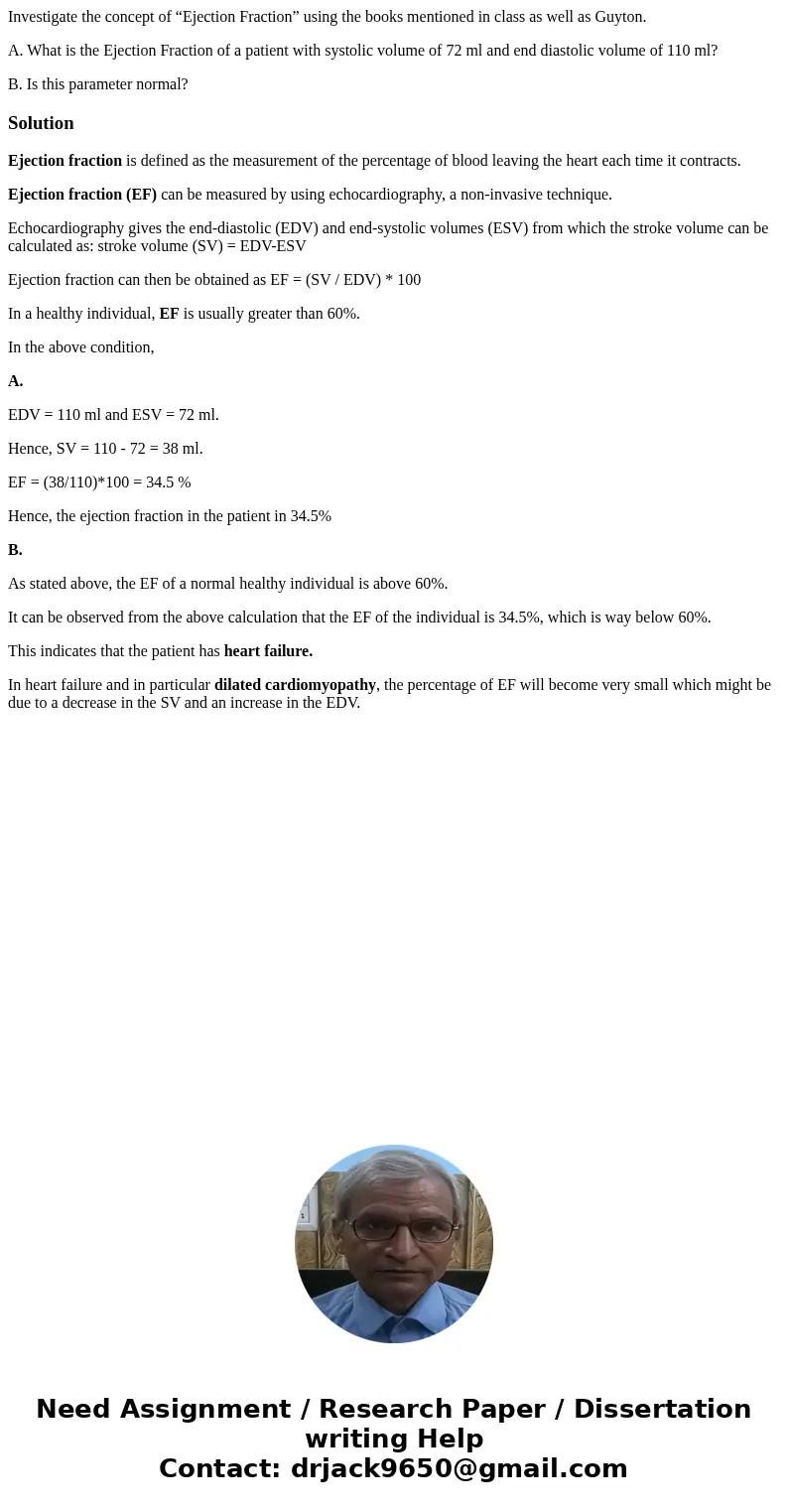Investigate the concept of Ejection Fraction using the books
Investigate the concept of “Ejection Fraction” using the books mentioned in class as well as Guyton.
A. What is the Ejection Fraction of a patient with systolic volume of 72 ml and end diastolic volume of 110 ml?
B. Is this parameter normal?
Solution
Ejection fraction is defined as the measurement of the percentage of blood leaving the heart each time it contracts.
Ejection fraction (EF) can be measured by using echocardiography, a non-invasive technique.
Echocardiography gives the end-diastolic (EDV) and end-systolic volumes (ESV) from which the stroke volume can be calculated as: stroke volume (SV) = EDV-ESV
Ejection fraction can then be obtained as EF = (SV / EDV) * 100
In a healthy individual, EF is usually greater than 60%.
In the above condition,
A.
EDV = 110 ml and ESV = 72 ml.
Hence, SV = 110 - 72 = 38 ml.
EF = (38/110)*100 = 34.5 %
Hence, the ejection fraction in the patient in 34.5%
B.
As stated above, the EF of a normal healthy individual is above 60%.
It can be observed from the above calculation that the EF of the individual is 34.5%, which is way below 60%.
This indicates that the patient has heart failure.
In heart failure and in particular dilated cardiomyopathy, the percentage of EF will become very small which might be due to a decrease in the SV and an increase in the EDV.

 Homework Sourse
Homework Sourse